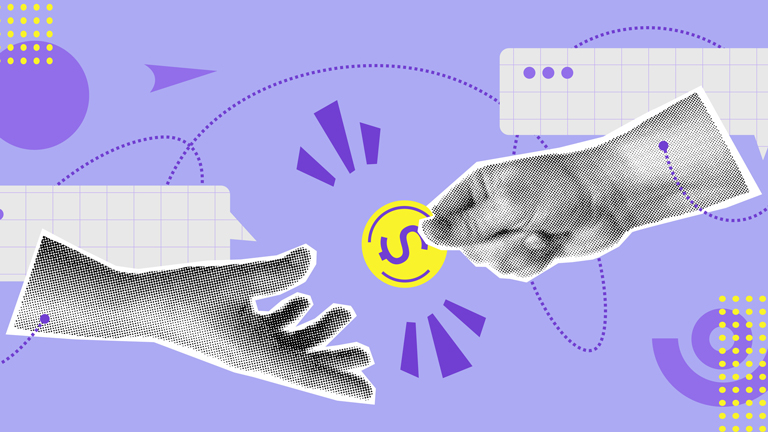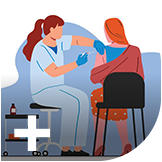Breaking through financial barriers to clinical trials: How innovative payment solutions are changing the game
Financial concerns are a significant barrier to patient participation in clinical trials. One study found that 64% of cancer trial participants incurred unexpected non-medical, trial-related expenses, with 51% spending over $600 per month and 21% exceeding $1,500 per month.

Another study discovered patients from disadvantaged neighbourhoods often travel 3x farther for trial participation – increasing costs and time commitments for those least able to afford them and hindering diverse participation.
However, 79% of patients surveyed by the American Cancer Society indicated they would be more likely to join a clinical trial if financial support were provided. In response, sponsors, sites and contract research organisations (CROs) are exploring novel strategies to ensure that out-of-pocket costs and time commitments no longer impede trial enrolment and retention.

Breaking down the cost of research: What participants really pay
Before we can develop effective payment solutions, we must understand the expenses clinical research patients incur and how they are currently addressed.
Expenses fall into two main categories: direct and indirect costs.
Direct costs
Direct costs are the out-of-pocket expenses that participants must cover to attend clinical trial visits, such as travel and meals.
Travel
The distance between a participant’s residence and the trial site can affect their willingness and ability to participate. “Local” travel is typically defined as less than one hour from home. However, even travelling one hour from home can be difficult, especially for those without personal vehicles or access to reliable public transportation. When caregivers accompany participants, travel costs can also increase substantially, especially when additional bus, train, or plane tickets are needed.
Meals
Meal expenses during trial participation vary by region and can accumulate over time. Again, when a caregiver accompanies the participant, additional per-person meal costs further escalate the financial burden.
Indirect costs
Indirect costs are the less obvious financial burdens associated with trial participation. Indirect costs, like dependent care and lost wages, can significantly impact participants, particularly those with lower incomes or inflexible work schedules.
Childcare, pet care, and eldercare
Participants responsible for dependents may incur additional expenses during trial visits.
Time and lost wages
Time away from work for trial participation can lead to lost wages, a considerable burden for hourly workers. Studies requiring caregiver accompaniment, such as those involving paediatric or geriatric populations, may also impose time and financial burdens on caregivers.

How are we currently alleviating the cost of participation?
Sponsors, sites, and CROs use three main methods to alleviate the financial burden of clinical trial participation: reimbursement, prefunding, and stipends.
Reimbursement
Reimbursement is when sponsors – or the administrating entity – cover trial-related expenses after participants submit receipts.
Advantages:
- Participants receive reimbursement for their actual costs, regardless of individual circumstances; for example, both the participant who spends $25 on a taxi and the participant who spends $450 on airfare are fully reimbursed.
- Full reimbursement for approved expenses does not impact taxes or government assistance eligibility.
Disadvantages:
- Participants must initially pay out of pocket, which can be a barrier for those with limited financial resources.
- Requires receipt submission, putting extra burden on participants.
- Processing and approval of receipts lead to reimbursement delays
- Some expenses may not be eligible, or reimbursement may be capped at a certain amount.
- Sponsors, trial sites, and staff must collect, review and approve receipts.
Prefunding
Prefunding involves the administrator providing funds to cover trial-related expenses in advance or arranging required services, such as travel arrangements (e.g., car service, train, flight), where the cost is covered by the sponsor upfront.
Advantages:
- Participants have access to funds upfront, reducing financial strain.
- Can be automated, cutting administrative burden for both participants and sites.
- Participants benefit from pre-funded logistics services, so they can get to the research site without paying out-of-pocket.
Disadvantages:
- Prefunding amounts are set in advance and may not cover actual costs for every participant.
- May be considered taxable income unless receipts are provided as proof of use.
- Complications develop if a participant misses a study visit after receiving prepayment.
Stipends
Stipends are fixed payments provided to participants for completing study-related activities. Unlike reimbursement or prepayment, stipends compensate participants for their time and effort, rather than for specific expenses.
Advantages:
- Participants do not need to submit receipts.
- Recognises participants’ time and commitment, which can improve engagement and retention.
- Reduces administrative workload for sites.
Disadvantages:
- Stipends may be considered taxable income if they exceed a certain amount ($600 in the US), providing added burden and financial strain on participants – potentially impacting enrolment and retention.
- Stipend amounts may not cover all expenses, creating disparities among participants.
- Sponsors may face challenges in securing Institutional Review Board (IRB) or Ethics Committee (EC) approval for stipends.
- Trial sites are often responsible for explaining tax implications to participants.
A well-designed participant payment model usually involves a combination of the above methods. However, no method or combination is entirely perfect – which is where technology comes into play.
Payment solutions for modern clinical trials
Technology is making participant payments easier, faster, and more reliable – improving participants’ payment experience and driving higher engagement and retention. Data-triggered payments, varied delivery options, and self-service platforms are prime examples.
Data-triggered payments
By integrating with clinical platforms, such as electronic clinical outcome assessments (eCOAs) and electronic patient-reported outcomes (ePROs), payments are automatically triggered when participants complete required activities.
Data-triggered payments serve as a friendly reminder for participants to complete e-diaries and other study tasks, encouraging active engagement, helping to ensure participants follow through with study protocols and improving data accuracy by incentivising timely and complete reporting.
Varied payment delivery options
Offering multiple payment methods helps participants receive funds in a way that suits them. Digital and physical methods are easily customised to accommodate different financial situations and technology access levels.
Digital payments like bank transfers and direct deposits send funds directly to participants’ accounts for quick and seamless transactions. Digital wallet services also offer convenient, flexible options for those comfortable with online payments.
Physical payments, like prepaid cards, are ideal for participants who do not have a bank account, are unfamiliar with digital payments, or are more comfortable using debit cards.
Self-service platforms
Providing participants with self-service tools – such as a dedicated app or website – enhances transparency and ensures faster and more accurate payments, all while reducing administrative burdens for participants and study sites.
Common capabilities include:
- Submitting receipts for reimbursement.
- Tracking payment status in real-time.
- Updating payment preferences.
- Managing payment-related inquiries with ease.
Better participant payment models enable better research
Technology-driven payment models don’t just support participants – they also offer significant advantages for trial sites, sponsors, and CROs.
Automation eliminates manual tasks, allowing site staff to focus on patient care. Secure payment processing reduces risk, ensuring compliance with financial regulations, and streamlined reporting enhances audit readiness, minimising institutional risks and simplifying tax compliance.
Most importantly, making payments easier and more efficient strengthens a trial’s overall integrity. When participants feel their contributions are recognised and supported, they are more likely to stay engaged and enrolled, contributing to the study’s success.
Improper inducement isn’t as common as we think
Participant payments can improve enrolment and retention, particularly among underrepresented populations. However, sponsors and CROs are often concerned about whether payments could unduly influence someone’s decision to participate, as guidances warn against “undue influence” in participant compensation.
Unfortunately, neither the Belmont Report nor federal regulations overtly define undue influence. Because of this ambiguity, some sponsors and IRBs limit or deny compensation. While well-intentioned, these overly cautious actions create unnecessary barriers to participation. But the FDA does specify that reimbursement for travel and related costs – such as airfare, lodging, and parking – are not undue influence. Furthermore, both the FDA and the Office for Human Research Protections (OHRP) acknowledge that paying participants is a common and generally acceptable practice.
By aligning compensation strategies with these regulations and using well-structured payment models buoyed by novel technology, we can help reduce financial barriers without compromising ethical integrity.
What comes next?
Financial accessibility must remain a key priority in clinical research. By leveraging technology and patient-centred payment strategies, sponsors, sites, and CROs can help remove financial barriers to research enrolment and engagement.
A future where trial participation is more personalised, efficient, and seamlessly integrated into patients’ lives is within reach – one where finances no longer stand in the way of advancing life-changing treatments.
Editor's note: Information for this article was provided by Equitable Access to Clinical Trials.
About the authors
Tanya Kogan is a seasoned product leader with over 15 years of experience owning and launching new products while driving innovation within high-growth organisations. She thrives in tackling complex challenges and has a proven record of conceptualising and launching products that solve problems, enhance efficiency, and enable data accuracy.
As a senior product manager at Greenphire, Kogan leads strategy and innovation for the ClinCard product, where her focus is on streamlining participant reimbursement and payment processes, with a goal of improving participant engagement and retention while eliminating the administrative burdens on-site staff.
Supercharge your pharma insights: Sign up to pharmaphorum's newsletter for daily updates, weekly roundups, and in-depth analysis across all industry sectors.
Click on either of the images below for more articles from this edition of Deep Dive: Research and Development 2025
















